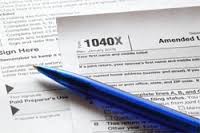Building an Effective Board of Directors
by Rebecca Lunn
For many organizations, the board of directors is one of their most important tools. A good board of directors can steer the organization in the right direction by adopting comprehensive governance and financial management policies, and ensuring the prudent use of all assets. However, in order to provide sound financial oversight, board members must have a certain level of financial literacy to properly understand the organization’s financial statements.
L&C audit partner, Pam Williams, notes that a board member orientation including information on the financial statements and accounting and audit processes, as well as mission and operational matters, is a good way to educate new board members. An effective board should also have at least one member with a financial background. The organization could even consider having the board member with financial expertise, or the organization’s CFO or Controller, conduct an annual training session for the full board.
Audit partner Karen Stanley states, “You will often rely on the financial experts on the board and outside consultants, such as the organization’s CPA, to interpret the statements for you. But it’s important to remember that everyone has a duty of care to the board.” Perhaps most importantly, board members should be encouraged to ask questions when trends or budget versus actual comparisons appear unreasonable. A simple task, such as reviewing the board financial packets prior to the meeting, can help a board member increase their financial knowledge and be more prepared to ask questions during the board meetings. By taking steps such as these, board members can increase their level of financial expertise in order to fulfill their role and responsibility to the organization.
Additional information can be found online here and here. Please also feel free to contact our office with any questions you have!
Rebecca is an audit senior with Langdon & Company LLP. She has experience working with various non-profits, across many industries.





 by Lee Byrd
by Lee Byrd
 me Tax Return, you should file a Form
me Tax Return, you should file a Form